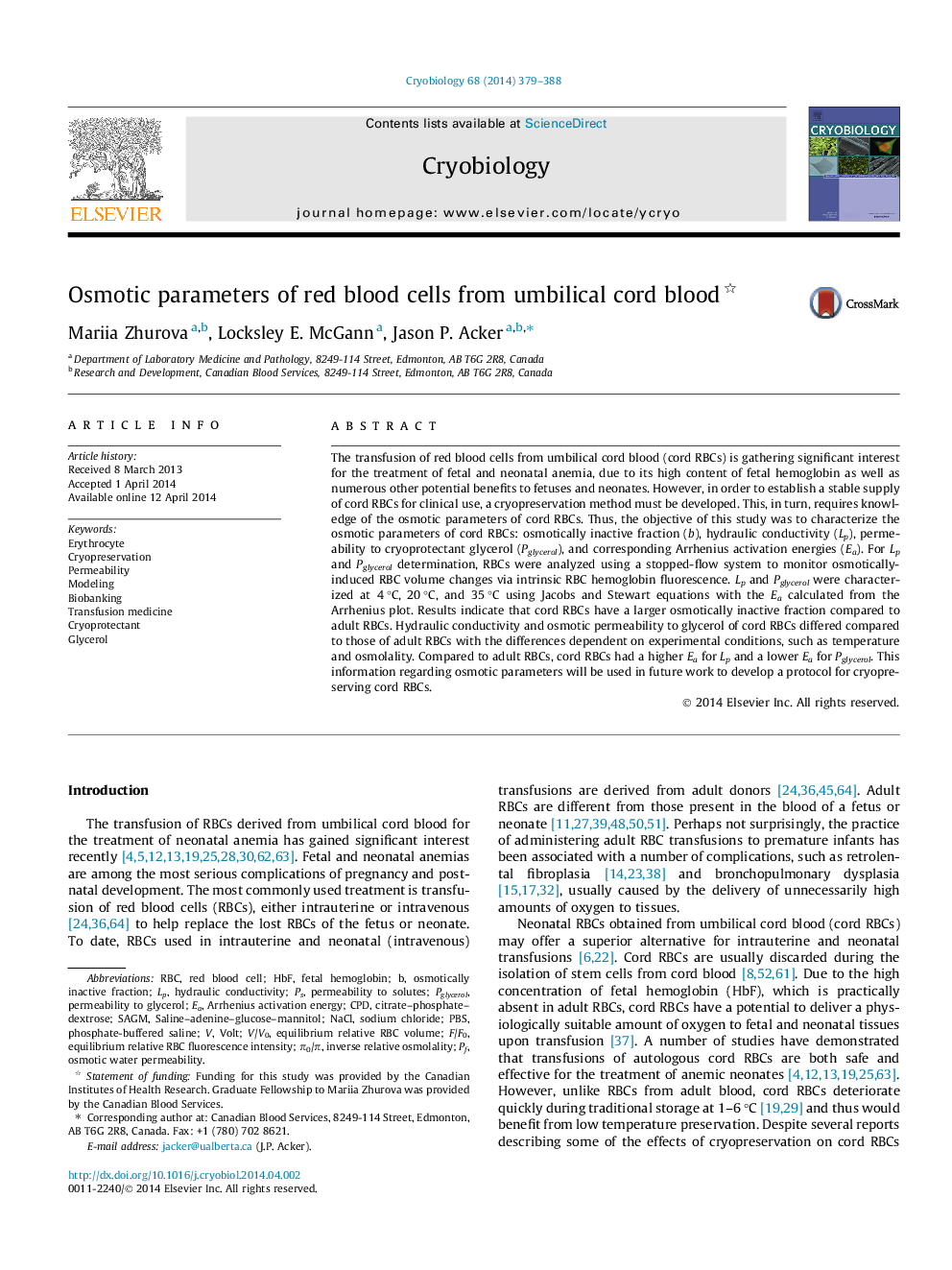| Article ID | Journal | Published Year | Pages | File Type |
|---|---|---|---|---|
| 2168429 | Cryobiology | 2014 | 10 Pages |
Abstract
The transfusion of red blood cells from umbilical cord blood (cord RBCs) is gathering significant interest for the treatment of fetal and neonatal anemia, due to its high content of fetal hemoglobin as well as numerous other potential benefits to fetuses and neonates. However, in order to establish a stable supply of cord RBCs for clinical use, a cryopreservation method must be developed. This, in turn, requires knowledge of the osmotic parameters of cord RBCs. Thus, the objective of this study was to characterize the osmotic parameters of cord RBCs: osmotically inactive fraction (b), hydraulic conductivity (Lp), permeability to cryoprotectant glycerol (Pglycerol), and corresponding Arrhenius activation energies (Ea). For Lp and Pglycerol determination, RBCs were analyzed using a stopped-flow system to monitor osmotically-induced RBC volume changes via intrinsic RBC hemoglobin fluorescence. Lp and Pglycerol were characterized at 4 °C, 20 °C, and 35 °C using Jacobs and Stewart equations with the Ea calculated from the Arrhenius plot. Results indicate that cord RBCs have a larger osmotically inactive fraction compared to adult RBCs. Hydraulic conductivity and osmotic permeability to glycerol of cord RBCs differed compared to those of adult RBCs with the differences dependent on experimental conditions, such as temperature and osmolality. Compared to adult RBCs, cord RBCs had a higher Ea for Lp and a lower Ea for Pglycerol. This information regarding osmotic parameters will be used in future work to develop a protocol for cryopreserving cord RBCs.
Keywords
Related Topics
Life Sciences
Agricultural and Biological Sciences
Agricultural and Biological Sciences (General)
Authors
Mariia Zhurova, Locksley E. McGann, Jason P. Acker,
